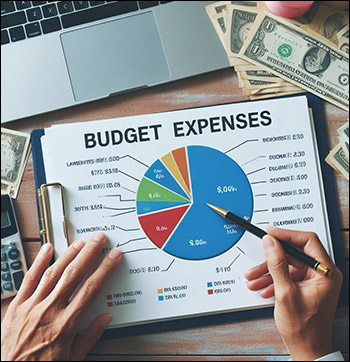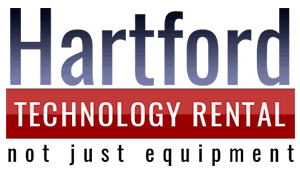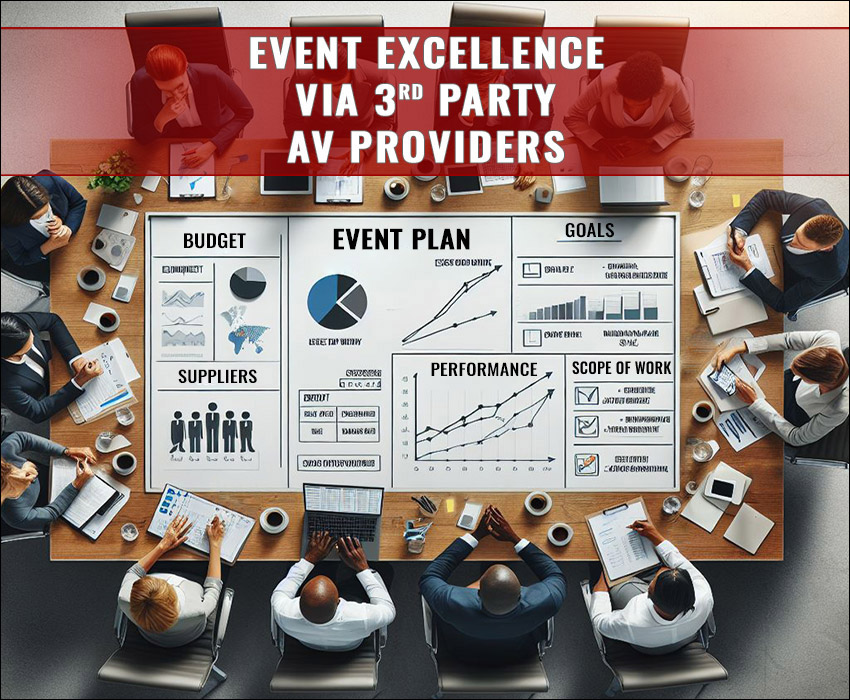Advantages of 3rd Party AV Providers for Event Excellence
Planning and organizing an event can be a daunting task, especially when it comes to audio-visual (AV) equipment and services. Whether it’s a corporate meeting, conference, or convention, AV is an integral part of event excellence. At Hartford Technology, we understand the significance of delivering top-quality AV rental equipment and services at events. As a full-service AV company, we offer a broad range of equipment, a team of professionals, and a nationwide network to support your event needs. However, writing a great Request for Proposal (RFP) can mean the difference between success and failure for your event. In this blog post, we will explore how to write a compelling RFP that sets clear goals and objectives, defines the scope of work, navigates challenges, selects the right supplier, measures success, and budgets for event excellence. Let’s get started!
Setting Clear Goals and Objectives
When planning an event, one of the first steps is to establish clear goals and objectives. These provide a roadmap for the event planner, allowing them to make informed decisions throughout the planning process. Clearly defined goals and objectives also form the foundation of a successful RFP by ensuring that everyone involved in the event is aligned on the purpose, scope, and intended outcomes.
Setting event goals and objectives involves identifying the reason for the event, the target audience or attendees, and the desired outcomes. This information is then used to guide every aspect of the event planning process, including the selection of event rentals. For example, if the goal of the event is to educate attendees, then choosing equipment such as high-quality projectors and screens, lighting that emphasizes visuals, and microphones for clear communication would be essential.
To ensure that your event’s goals and objectives are clear and concise, consider the following tips: begin by defining your event’s purpose and intended outcomes, make sure your goals and objectives are SMART – specific, measurable, achievable, realistic, and time-bound, and involve stakeholders in the RFP goal setting process to ensure alignment and coordination.
In conclusion, setting clear and actionable objectives in event planning is imperative to the success of any event. By doing so, organizers can work towards achieving their intended outcomes and ensure a positive return on investment. When drafting your RFP, be sure to articulate these goals and objectives clearly and comprehensively to make it more efficient and easier for vendors to respond.
Defining Your Event’s Scope of Work

Defining the event’s scope of work is an essential step in creating a successful RFP. It encompasses the necessary details and requirements for executing the event, making it critical to tailor it to the event’s type and size. Your event scope of work should include the event’s date and location, its purpose, goals and objectives, the audience, and any specific requirements. These requirements may include seating arrangements, audiovisual equipment, catering, and transportation.
A comprehensive scope of work should also include detailed timelines, outlining specific activities and task completion deadlines. The timeline is essential from the planning process to the day of the event, ensuring your team and vendors stay on schedule. Additionally, it is essential to provide clear instructions and expectations regarding your vendor’s role in executing the event. Include a detailed description of the vendor’s responsibilities, timelines, and communication channels.
When crafting detailed scope sections, consider including examples of your expectations to ensure vendors meet your requirements. For example, you may require that your vendors provide audiovisual equipment that is reliable, up-to-date, and appropriate for the audience. Alternatively, your requirements may specify that vendors supply appropriate wireless internet for attendees. By outlining the scope of work, you ensure that you receive comprehensive quotes from vendors that address all of your event requirements.
In conclusion, your event’s scope of work is a critical component of a successful RFP. By defining the RFP details and requirements of your event upfront, you ensure alignment with your team and vendors. A well-crafted scope of work should be comprehensive, tailored to your event’s size and type, and provide excellent examples to clarify expectations. Through a clear event scope of work, you ensure a smooth planning process and successful execution of your event.
Crafting a Clear Event Timeline

Crafting a clear event timeline is another crucial component of a successful RFP for events. Whether you are organizing a conference, convention, or meeting, having a well-defined timeline is essential for keeping all the moving parts in sync. A timeline is essentially a project management tool that enables you to break down the critical tasks of your event into manageable milestones that are time-bound.
The event timeline in an RFP should outline the key dates and deadlines, which will help ensure that everything runs smoothly and on schedule. A comprehensive timeline should include all pre-event preparations, such as vendor deliveries, setup, and rehearsals, as well as the actual event activities. It should also include post-event tasks, such as dismantling equipment, packing up, and returning rented equipment.
When planning a timeline for events, it is essential to be realistic and flexible. Your timeline should allow some wiggle room for unforeseen events, such as technical problems or last-minute changes. You should also consult with your vendors and team to ensure that the timeline accommodates their needs and constraints.
Creating event schedules can be challenging, but there are strategies you can use to make it easier. One approach is to break down the event into stages, such as registration, keynote speeches, breakout sessions, and meals. This will enable you to allocate time more efficiently and delegate tasks to different teams within your organization.
In summary, an event timeline should be an integral part of your RFP, and it should be well defined and realistic. A comprehensive timeline will help you stay organized, facilitate communication between teams, and ensure that everything runs like clockwork. With proper timeline planning for events, you can deliver a seamless event that meets or exceeds your attendees’ expectations.
Navigating Event Challenges in Your RFP

When putting together an RFP, it’s important to be aware of potential roadblocks in event planning that could arise during the planning process. By addressing these challenges in the RFP, you can proactively communicate your expectations to suppliers and vendors.
One common challenge in event planning is dealing with pre-existing issues in events. For example, if the venue has a poor sound system, this can impact the success of your event. In your RFP, be sure to communicate any pre-existing issues at the venue and ask for supplier recommendations to address these issues.
Another challenge in event planning is managing last-minute changes and requests. This can be particularly challenging if you’re working with multiple vendors. Communicating your expectations for flexibility and responsiveness in the RFP can help ensure that your suppliers are prepared to handle unexpected changes.
Overall, the key to navigating event challenges in your RFP is to be proactive and transparent. By communicating your expectations upfront, you can ensure that you’re working with suppliers who are prepared to handle any issues that may arise during the planning process. This will help ensure that your event runs smoothly and is a success.
Selecting the Right Supplier for Your Event

Vendor evaluation in events is a critical component of the RFP process. It is important to choose a supplier that is experienced, reliable, and meets your specific event needs. When choosing event suppliers, there are several criteria to consider, including the quality of equipment, pricing, availability, and customer service. It is important to thoroughly evaluate vendors to ensure that they are a good fit for your event and can meet your desired outcomes.
A thorough supplier selection process involves the development of an RFP that outlines your event requirements and seeks bids from potential suppliers. The RFP supplier selection process should include clear and concise evaluation criteria that are aligned with your event goals. This enables you to identify the vendors that will best support your event.
In evaluating suppliers, it is important to consider vendor compatibility. This means assessing how well a supplier’s skills and experience fit with your event’s requirements. Working with a supplier that understands the nature of your event and has the necessary equipment and expertise can make a big difference in the success of your event. Supplier compatibility also plays an important role in building strong supplier relationships, which are crucial in ensuring event success.
At Hartford Technology, we prioritize the quality of our equipment, as well as our customer service, to ensure that we are the best fit for your event needs. Our experienced team works closely with you to understand your requirements and provide customized solutions that meet your unique event needs. Choose us as your trusted partner in event success.
Measuring Success in Event Planning

Measuring success in event planning is critical to achieve a positive return on investment (ROI) and determine the overall impact of your event. This is where RFP success indicators come into play. Event success metrics can range from attendee satisfaction rate to the number of leads generated to social media engagement. The KPIs you choose will depend on the objectives and goals that you defined in the RFP.
Quantifiable metrics for success should be identified in the RFP in order to track the progress and determine the efficacy of the event. These metrics can help evaluate the success of the event from different angles. For instance, a high attendance rate might suggest an increased brand awareness, whereas high participant engagement might indicate a successful learning experience. It is important to set specific, realistic and measurable KPIs in your RFP to ensure that everyone is aligned on what defines success.
Tracking success through the event lifecycle is no easy feat. It can be a complex process that involves capturing data before, during and after the event. The RFP should specify how the data will be captured and define the responsible party for the collection and analysis of the data. Once the KPIs have been defined and collected, they can be analyzed and evaluated against benchmarks to help identify areas of improvement. This data is incredibly valuable as it can help you make informed decisions for future events.
Overall, measuring KPIs in events a critical component of any successful event. By incorporating these metrics into the RFP, you are setting clear expectations for what success looks like and how it will be measured. This will allow for a more data-driven approach to event planning and help achieve a higher ROI.
Budgeting for Event Success

Event budgeting in the RFP process is an essential first step when communicating with potential suppliers. Creating a realistic budget for an event is critical to its success. A well-planned budget will prevent overspending and ensure that the event’s goals are achieved without breaking the bank. In devising an event budget, it’s important to know the different factors that influence an event’s costs. These factors can include the size of the event, the venue’s location, and the type of equipment needed.
When allocating funds for events, it’s essential to prioritize the event’s crucial aspects. For example, if the event’s goal is to have a powerful audio-visual component, allocating more funds towards renting appropriate AV equipment, staging, and labor may be necessary. Conversely, if the event’s sole function is providing food and beverages, then budgeting and allocating funds to caterers would take precedence over other aspects.
It’s important to communicate budget expectations within the RFP to vendors upfront in order to avoid confusion and misunderstandings between the event planner and vendor, which could lead to unwarranted additional charges on the final bill, and ultimately impact the event’s budget negatively.
Lastly, effective budget estimation for event planning necessitates making realistic, data-driven decisions. Including an event budget projection sheet within the RFP can be helpful. It itemizes all expenses and helps event planners track their actual spending compared to the budgeted spending for the event, which makes it easier for them to adjust their financial course quickly or before it’s too late. The focus should be on creating a budget that enables the event to provide an engaging and successful experience for attendees while being financially sustainable.
Crafting a Compelling Project Overview

Crafting a compelling RFP project overview is essential for setting the tone of collaboration and achieving successful events. The project overview should serve as a brief introduction to the RFP, summarizing the key points that the supplier should know before proceeding with the proposal. It should also showcase the scope of work, goals and objectives, and budget requirements of the event for the suppliers to determine their interest and potential contribution.
Engaging RFP summaries contain brief and concise details of the proposed event, which could excite the supplier and make them look forward to submitting their proposal. Moreover, it should entice the suppliers to collaborate with the event organizer and provide creative solutions that would make the event stand out.
Setting a positive tone for collaboration in event planning entails using straightforward language and respecting the supplier’s time by providing clear and defined expectations. For the RFP project overview, it is particularly important to emphasize the significance of the event and its impact on the attendees. By using a positive tone, it encourages suppliers to put their best foot forward, sparking their creativity, and making the process more enjoyable.
In summary, creating a compelling RFP project overview involves summarizing the key RFP components, creating an engaging summary, and setting a positive tone for collaboration. Together, these elements contribute to a successful event by attracting suppliers with creative and innovative ideas, ensuring clear and defined expectations, and promoting effective communication and teamwork.
Conclusion
In conclusion, crafting a great RFP for your meetings, conferences, and conventions can make all the difference in bringing about a successful event that meets the goals and objectives set by your organization. By setting clear goals, defining the scope of work, proactively addressing potential challenges, carefully selecting suppliers, measuring success through KPIs, and creating a realistic budget, you can ensure that your event meets the expectations of your stakeholders. With the right AV rental provider by your side, you can bring your vision to life and deliver an unforgettable experience for your attendees. At Hartford Technology, we are committed to helping you achieve your goals and exceed your expectations, no matter the size or location of your event. Contact us today to learn more about our full range of AV equipment and services.


